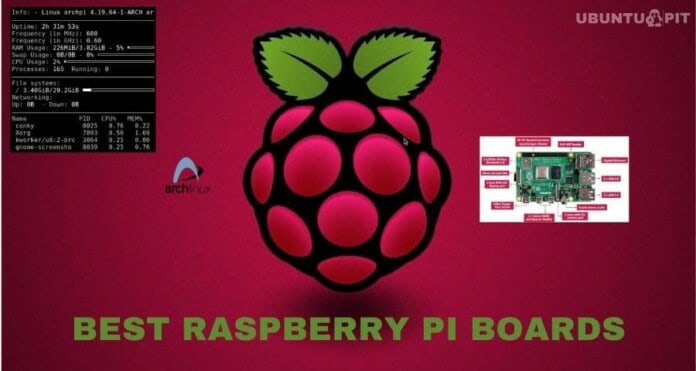Are you looking for the perfect SBC (Single Board Computer) for your project? Well, It’s a common problem for everyone that we get too confused about buying the perfect board. In this era of technology, we have multiple options, and it’s a bit tough to choose one. Raspberry pi boards are the most popular SBC these days because of its friendly cost and portability. When the Raspberry pi board was first promoted, it got an unexpectedly positive response. Since then, it has maintained its popularity, and the manufacturer is always trying to bless us with the most updated version.
What is Raspberry Pi?
Raspberry Pi can be defined as a card-sized computer that can be used for multiple purposes. This tiny device can offer you every application that you expect from a desktop computer. People of all ages can experience computing and programming (Python, Scratch) with this device. There are two kinds of raspberry pi models- Model A and Model B. Model A features Ethernet port, but Model B doesn’t have an Ethernet port.
Different models offer different RAM (256 MB to 8 GB). It contains a central processing unit that is responsible for carrying out all the instructions. Raspberry Pi uses the ARM11 series processor. There are GPIO pins in Raspberry Pi boards that help to connect the board with other electronic boards, and they are also capable of taking input and output commands. It also supports audio and video through HDMI and Composite connection.
Best Raspberry Pi Boards
In this article, we will discuss 20 best raspberry pi boards that you will find available these days. When we need an SBC, it’s annoying to search for the specifications one by one. So, we gathered the main information to make this job a little bit easier for you. Definitely, all the boards will help you to make your dream Raspberry Pi Projects.
1. Raspberry Pi A+
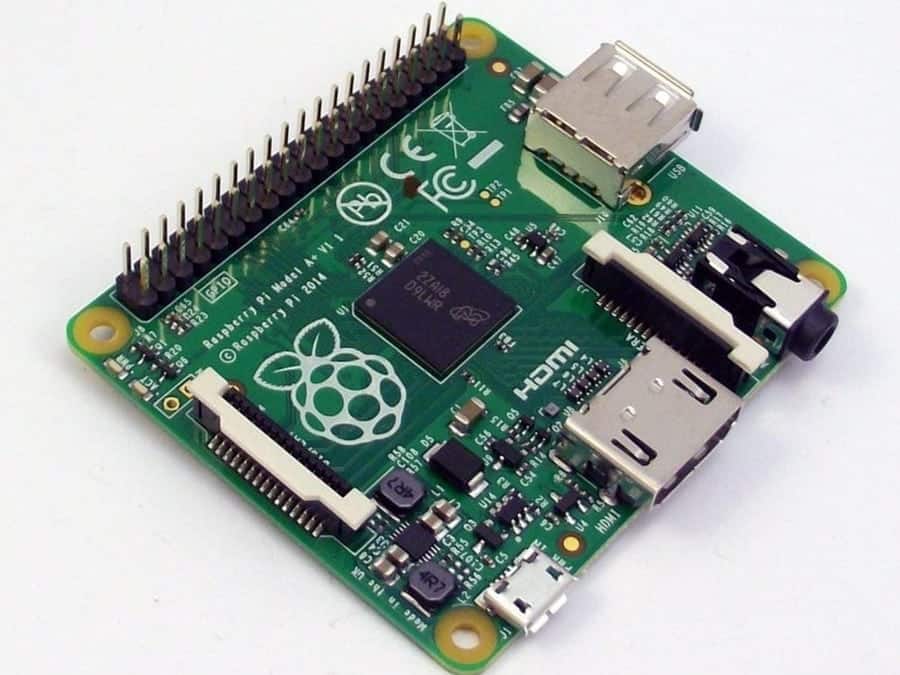 Raspberry Pi A+ was first launched on 10th November 2014. Though it doesn’t support an Ethernet or wireless connection, still, you can build some excellent robotics projects with it. It’s a tiny single-board computer that can be used for a multi-functional purpose. Also, this raspberry pi board is very cheap and easy to carry.
Raspberry Pi A+ was first launched on 10th November 2014. Though it doesn’t support an Ethernet or wireless connection, still, you can build some excellent robotics projects with it. It’s a tiny single-board computer that can be used for a multi-functional purpose. Also, this raspberry pi board is very cheap and easy to carry.
It is updated with more GPIO pins than Model B+. Raspberry Pi A+ features a camera and also 256 MB RAM. It doesn’t contain a real-time clock so, when it’s not powered on, it can’t keep track of time. Its dimension is 2.55 in × 2.22 in × 0.39 in, and it weighs about 23 grams.
Specifications
- SOC type: Broadcom BCM2835
- Core type: ARM1176JZF-S
- Number of cores: 1
- RAM: 256 MB
- CPU clock: 700 MHz
- USB: One port
- GPIO: 40 pins
- Analog video out: Shared with audio jack
- Analog audio out: 3.5 mm jack
Pros and Cons of Raspberry Pi A+
Pros
- Low cost.
- Light-weight.
- The GPIO header includes 40 pins.
- It is a very good option for school projects.
Cons
- It has no wireless or wired connectivity.
- Only 256 MB RAM
2. Raspberry Pi B
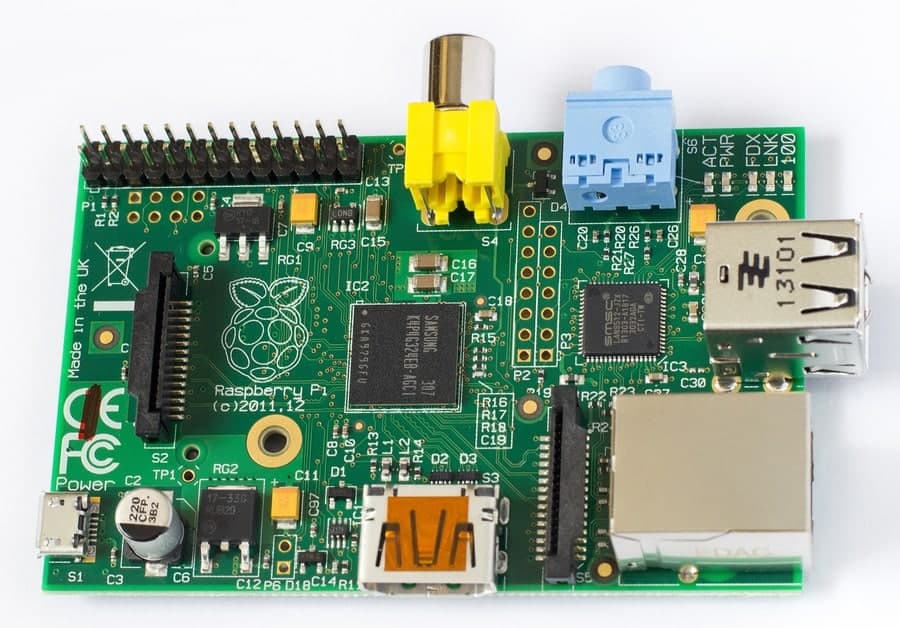 Raspberry Pi B was first launched on 15th February 2012. This is a super budget-friendly single board computer. Its size, shape, and light-weight capability are really praiseworthy. This card-sized Linux computer is excellent for school projects and many other small projects. Sometimes it helps in some big projects also.
Raspberry Pi B was first launched on 15th February 2012. This is a super budget-friendly single board computer. Its size, shape, and light-weight capability are really praiseworthy. This card-sized Linux computer is excellent for school projects and many other small projects. Sometimes it helps in some big projects also.
This board offers 512 MB RAM. It has two USB ports and an Ethernet connection so you can attach your personal device with it. It doesn’t feature wireless and Bluetooth connectivity, but it does feature a camera connector. Its dimension is 2.12 in × 3.37 in × 0.67 in, and it weighs about 45 grams.
Specifications
- SOC type: Broadcom BCM2835
- Core type: ARM1176JZF-S
- Number of cores: 1
- RAM: 512 MB
- CPU clock: 700 MHz
- USB: 2×USB 2.0
- GPIO: 26 pins
- Analog video out: Composite video
- Analog audio out: 3.5 mm jack
Pros and Cons of Raspberry Pi B
Pros
- Compact design.
- Light-weight.
- Low cost.
Cons
- Only 512 MB RAM.
3. Raspberry Pi Zero
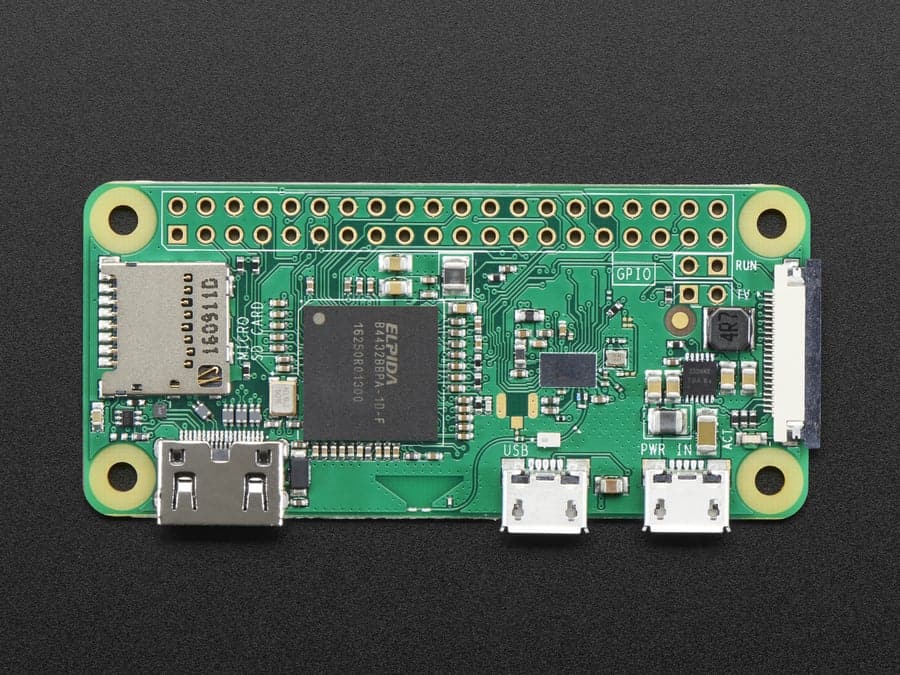 Raspberry pi zero was first launched in 2012. It is one of the most affordable SBC. Raspberry pi zero features camera connector in its latest version but doesn’t have wireless connectivity. Its dimension is 1.18 in×2.55 in×0.19 in, and its weight is 9 grams. The manufacturer declared that its production would go on at least till January 2026.
Raspberry pi zero was first launched in 2012. It is one of the most affordable SBC. Raspberry pi zero features camera connector in its latest version but doesn’t have wireless connectivity. Its dimension is 1.18 in×2.55 in×0.19 in, and its weight is 9 grams. The manufacturer declared that its production would go on at least till January 2026.
Specifications
- SOC type: Broadcom BCM2835
- Core type: ARM1176JZF-S
- Number of cores: 1
- RAM: 512 MB
- CPU clock: 1 GHz
- USB: micro+ micro OTG
- GPIO: 40 pins
- Analog video out: Via unpopulated pin
- Analog audio out: HDMI audio
Pros and Cons of Raspberry Pi Zero
Pros
- It is the cheapest SBC available in the market.
- It’s a small dimension, and light-weight makes it super portable.
- Power consumption is lower than the other boards.
- It covers almost all features in the little dimension.
Cons
- Not a suitable option for bigger projects.
- Raspberry pi zero doesn’t contain any feature regarding wireless connection or Ethernet.
4. Raspberry Pi Zero Wireless
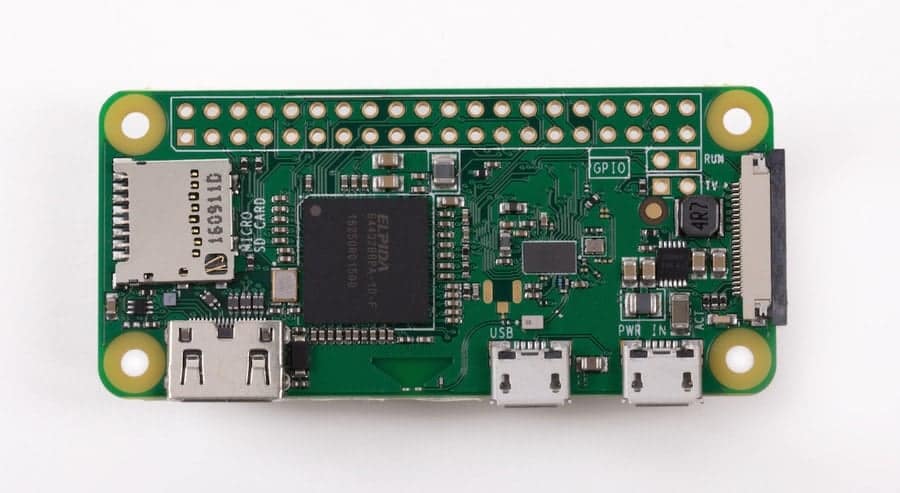 Raspberry pi zero wireless models were first launched on 28th February 2017. It is a little updated version of Raspberry pi zero. Unlike raspberry pi zero, it has wireless connectivity, which increases its versatility. Its dimension is 1.18 in×2.55 in×0.196 in. It is one of the lightest raspberry pi boards that weigh about 9 grams.
Raspberry pi zero wireless models were first launched on 28th February 2017. It is a little updated version of Raspberry pi zero. Unlike raspberry pi zero, it has wireless connectivity, which increases its versatility. Its dimension is 1.18 in×2.55 in×0.196 in. It is one of the lightest raspberry pi boards that weigh about 9 grams.
Specifications
- SOC type: Broadcom BCM2835
- Core type: ARM1176JZF-S
- Number of cores: 1
- RAM: 512 MB
- CPU clock: 1 GHz
- USB: 1×micro OTG
- GPIO: Yes
- Analog video out: Via unpopulated pin
- Analog audio out: HDMI audio
Pros and Cons of Raspberry Pi Zero Wireless
Pros
- It features wireless connectivity.
- Its 3D case is really adorable.
- Budget-friendly.
- It also features camera connectivity.
Cons
- It contains a very limited memory.
- Raspberry pi zero w requires a cable adapter.
5. Raspberry Pi Zero WH
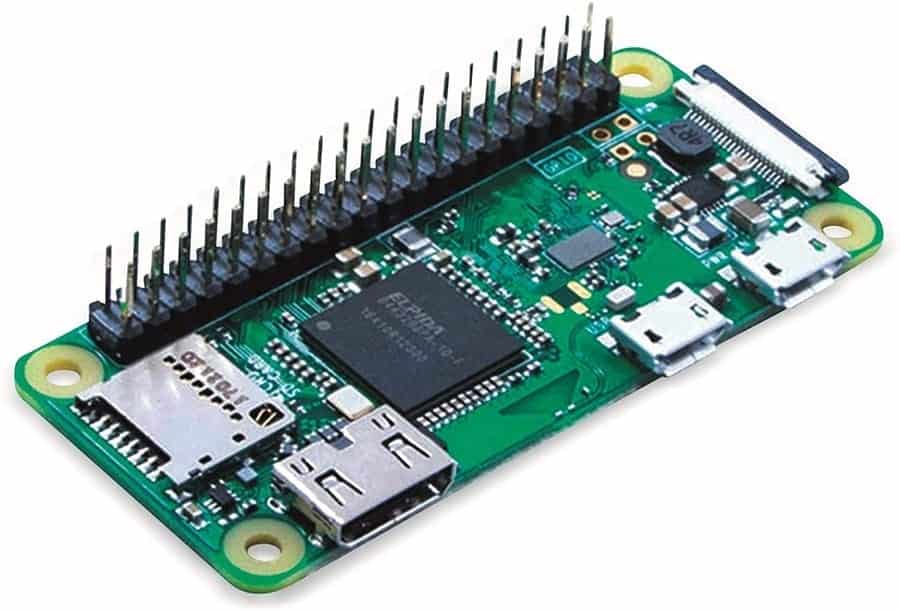 Raspberry Pi Zero WH was first launched on 12th January 2018. This model also features wireless connectivity but not Ethernet connectivity. It has a camera connector just like Raspberry pi zero W. Its dimension is 1.18 in×2.55 in×0.516 in. It’s a little heavier than the other series of raspberry pi zero boards and weighs about 12 grams.
Raspberry Pi Zero WH was first launched on 12th January 2018. This model also features wireless connectivity but not Ethernet connectivity. It has a camera connector just like Raspberry pi zero W. Its dimension is 1.18 in×2.55 in×0.516 in. It’s a little heavier than the other series of raspberry pi zero boards and weighs about 12 grams.
Specifications
- SOC type: Broadcom BCM2835
- Core type: ARM1176JZF-S
- Number of cores: 1
- RAM: 512 MB
- CPU clock: 1 GHz
- USB: Micro & Micro OTG
- GPIO: Yes
- Analog video out: Via unpopulated pin
- Analog audio out: HDMI audio
Pros and Cons of Raspberry Pi Zero WH
Pros
- Faster than others.
- It features Bluetooth and wireless connectivity.
- Low cost.
- Versatile and very useful for small projects.
Cons
- Heavier than others.
- The performance is a little bit weak.
6. Raspberry Pi 1 Model A+
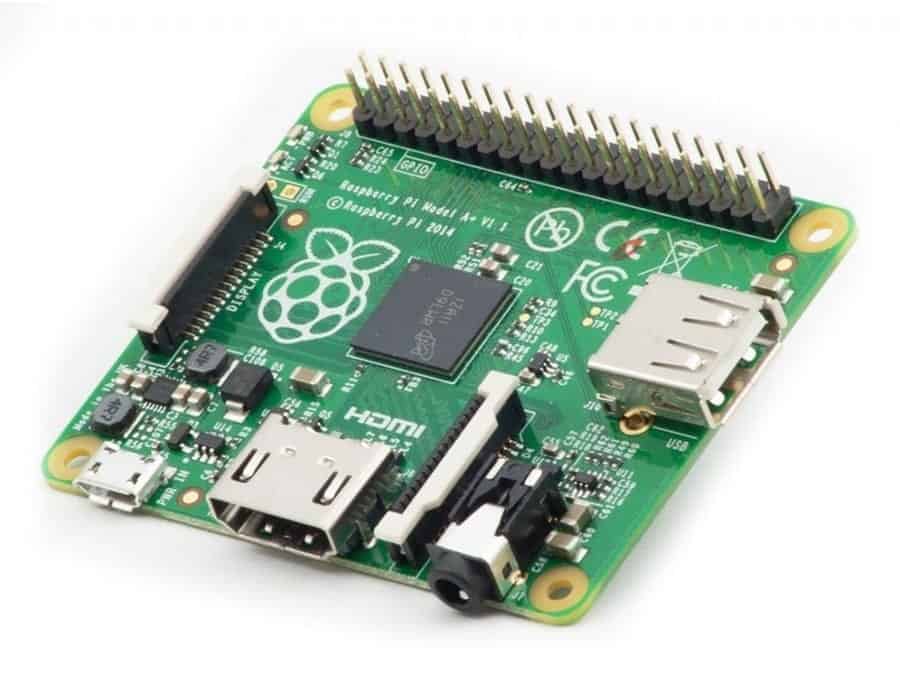 Raspberry pi 1 model A+ was first launched on 10th November 2014. Since then, it is one of the most popular raspberry pi boards. This board features a camera connector and also an LCD panel. It also has wireless but no Ethernet connectivity system. Its CPU clock is 700 MHz, and this is one of the main reasons for its versatility. This model features Bluetooth 4.1 connectivity. Its dimension is 2.55 in×2.22 in×0.39 in, and it weighs about 23 grams.
Raspberry pi 1 model A+ was first launched on 10th November 2014. Since then, it is one of the most popular raspberry pi boards. This board features a camera connector and also an LCD panel. It also has wireless but no Ethernet connectivity system. Its CPU clock is 700 MHz, and this is one of the main reasons for its versatility. This model features Bluetooth 4.1 connectivity. Its dimension is 2.55 in×2.22 in×0.39 in, and it weighs about 23 grams.
Specifications
- SOC type: Broadcom BCM2835
- Core type: ARM1176JZF-S
- Number of cores: 1
- RAM: 256 MB
- CPU clock: 700 MHz
- USB: 1
- GPIO: Yes
- Analog video out: Shared with audio jack
- Analog audio out: 3.5 mm Jack
Pros and Cons of Raspberry Pi 1 Model A+
Pros
- Versatility- It can be used for both small and big projects.
- It has Bluetooth and wireless connectivity.
- It features a quad-core processor.
- It is a very user-friendly model for all.
Cons
- The memory of this board could have been better.
- There is only one USB port on this board.
7. Raspberry Pi 1 Model B
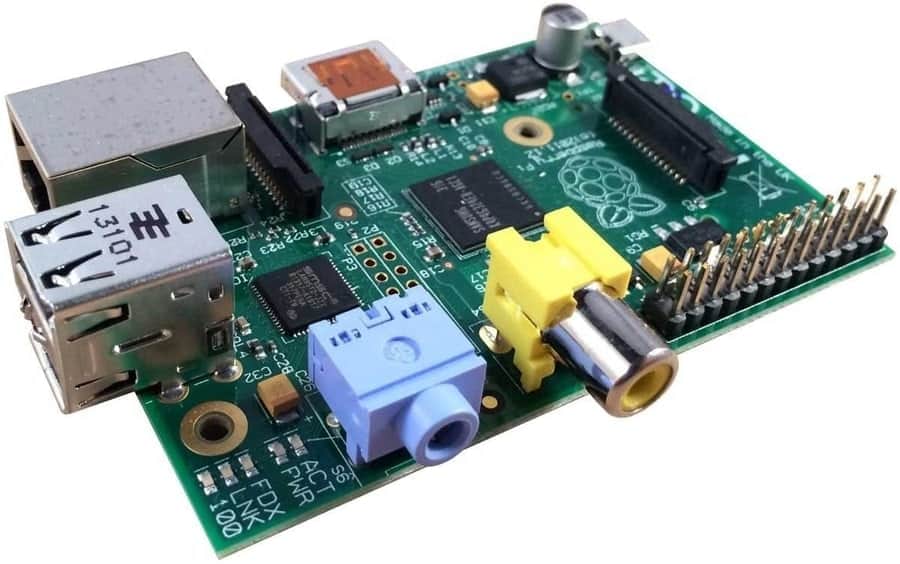 Raspberry Pi 1 Model B was first launched on 24th February 2012. The manufacturer has developed its memory, and it’s twice from model A+. This model is capable of delivering Bluray quality playback. Its power consumption depends on its usage, but generally, the current consumption stays between 300 mA to 500 mA. The PWM pin is one of the GPIO headers, and it is shared with the audio system. Its dimension is 3.35 in × 2.2 in × 0.8 in, and it weighs about 42 grams.
Raspberry Pi 1 Model B was first launched on 24th February 2012. The manufacturer has developed its memory, and it’s twice from model A+. This model is capable of delivering Bluray quality playback. Its power consumption depends on its usage, but generally, the current consumption stays between 300 mA to 500 mA. The PWM pin is one of the GPIO headers, and it is shared with the audio system. Its dimension is 3.35 in × 2.2 in × 0.8 in, and it weighs about 42 grams.
Specifications
- SOC type: Broadcom BCM2835
- Core type: ARM1176JZF-S
- Number of cores: 1
- RAM: 512 MB
- CPU clock: 700 MHz
- USB: 2×USB 2.0
- GPIO: 40 pins
- Analog video out: Composite video or HDMI
- Analog audio out: 3.5 mm jack
Pros and Cons of Raspberry Pi 1 Model B
Pros
- Low cost.
- It’s an outstanding SBC for education purposes.
- Compact designing.
- It supports multiple operations at a time.
Cons
- Processing power is low.
- This board also demands Linux knowledge with others.
8. Raspberry Pi 1 Model B+
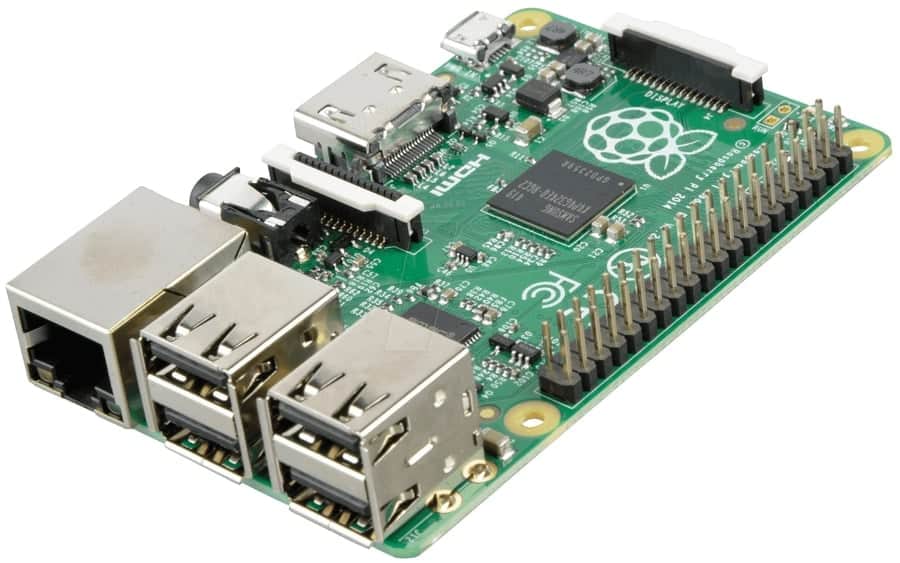 Raspberry Pi 1 Model B+ was first launched in July 2014. It is a matter of sorrow that this version is probably the last version of the original raspberry pi. The GPIO header consists of 40 pins in this version, and the first 26 pins are the same as Model A and B. One of the most lucrative part of this model is it comes with four USB ports.
Raspberry Pi 1 Model B+ was first launched in July 2014. It is a matter of sorrow that this version is probably the last version of the original raspberry pi. The GPIO header consists of 40 pins in this version, and the first 26 pins are the same as Model A and B. One of the most lucrative part of this model is it comes with four USB ports.
In this version, the manufacturer has replaced the linear regulator with switching ones. As a result, it consumes low power compared to other Raspberry Pi boards. Its dimension is 4.96 in x 3.23 in x 0.94 in and weighs about 49 grams.
Specifications
- SOC type: Broadcom BCM2835
- Core type: ARM1176JZF-S
- Number of cores: 1
- RAM: 512 MB
- CPU clock: 700 MHz
- USB: Four ports
- GPIO: 40 pins
- Analog video out: Composite video
- Analog audio out: 3.5 mm jack
Pros and Cons of Raspberry Pi 1 Model B+
Pros
- Power consumption is much lower than previous models.
- The friction-fed SD card has been replaced here with a push-push micro SD version.
- This model features better audio.
- The GPIO header has been updated to 40 pins.
Cons
- Less memory.
- A bit heavy.
9. Raspberry Pi 2
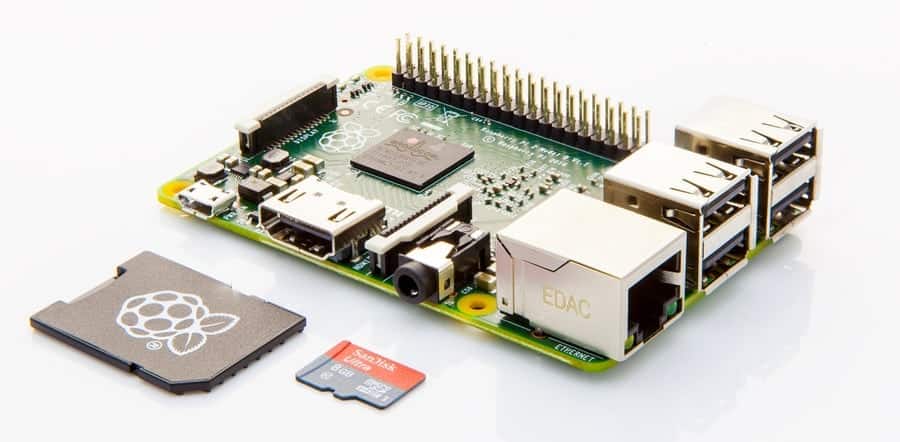 Raspberry Pi 2 was first launched on 1st February 2015. It is a second-generation board. Raspberry Pi 2 is an updated version of Model B+. We can see the change in its appearance. This version comes with more GPIO pins.
Raspberry Pi 2 was first launched on 1st February 2015. It is a second-generation board. Raspberry Pi 2 is an updated version of Model B+. We can see the change in its appearance. This version comes with more GPIO pins.
The USB ports are increased to number four, and also the SD card has been replaced with the microSD. Raspberry Pi 2 supports Ethernet connection but not wireless. It doesn’t have Bluetooth connectivity. Its power rating is 800 mA, and power sources are micro USB or GPIO. Its dimension is 3.37 in x 2.22 in x 0.67 in, and it weighs about 45 grams.
Specifications
- SOC type: Broadcom BCM2835
- Core type: Cortex-7
- Number of cores: 4
- RAM: 1GB
- CPU clock: 900 MHz
- USB: 4+OTG
- GPIO: 40 pins
- Analog video out: Shared with audio jack
- Analog audio out: 3.5 mm jack
Pros and Cons of Raspberry Pi 2
Pros
- Compact design.
- It has limited power consumption features.
- Better audio quality.
- High-class performance.
Cons
- A bit heavier.
- It doesn’t feature Bluetooth or wireless connectivity.
10. Raspberry Pi 2 Model B
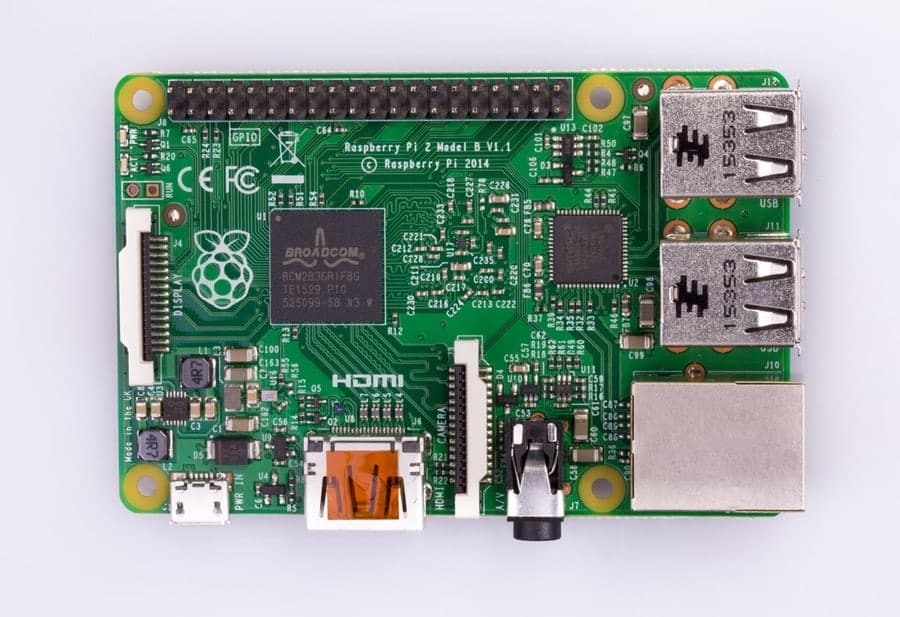 Raspberry Pi 2 Model B was first launched in February 2015. This is a second-generation board, and it replaced the Raspberry Pi 1 Model B+. Raspberry Pi 2 Model B got an unbelievably positive response just after it was released. The manufacturer has modified the appearance of the board from Model B+.
Raspberry Pi 2 Model B was first launched in February 2015. This is a second-generation board, and it replaced the Raspberry Pi 1 Model B+. Raspberry Pi 2 Model B got an unbelievably positive response just after it was released. The manufacturer has modified the appearance of the board from Model B+.
They added more GPIO pins and increased the USB port number to four. They didn’t change the GPU. This raspberry pi board features a quad-core processor that runs at 900 MHz. Its dimension is 3.35 in × 2.2 in × 0.8 in, and it weighs about 45 grams. Due to its huge fan base, the production of this board will run till January 2026.
Specifications
- SOC type: Broadcom BCM2835
- Core type: Cortex-7
- Number of cores: 4
- RAM: 1GB
- CPU clock: 900 MHz
- USB: Four ports
- GPIO: 40 pins
- Analog video out: Composite video
- Analog audio out: 3.5 mm jack
Pros and Cons of the Raspberry pi 2 Model B
Pros
- Its versatility is really praiseworthy.
- Comparatively low cost.
- It can run both Linux and Windows 10.
- Satisfying Performance.
Cons
- The Software setup is complicated sometimes.
- Processing time is low.
11. Raspberry Pi 3
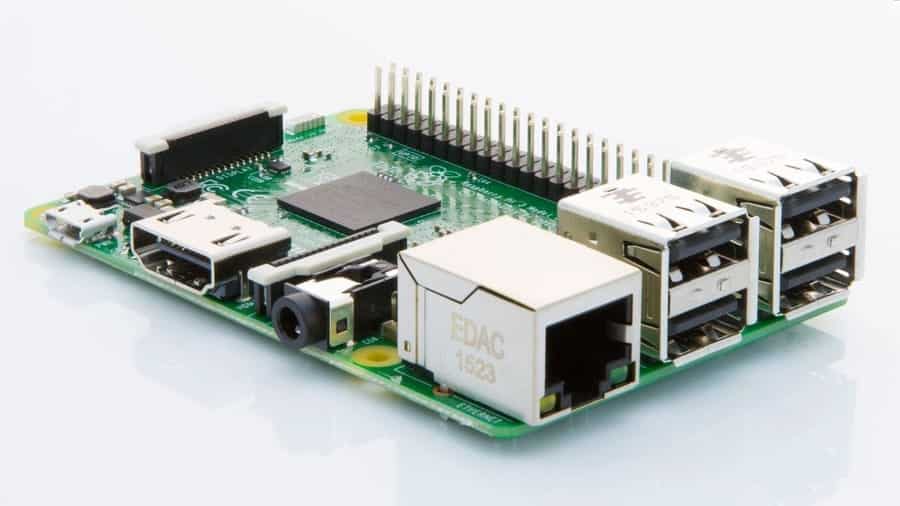 Raspberry Pi 3 was first launched on 29th February 2016. The manufacturer tried to deliver the best output at a cheaper rate in this version. You will fall in love with this raspberry pi board because of its multi-function. We can’t call it a revolution because it’s more like an evolution. It features wireless connectivity and improved processor that has made it possible to perform far better.
Raspberry Pi 3 was first launched on 29th February 2016. The manufacturer tried to deliver the best output at a cheaper rate in this version. You will fall in love with this raspberry pi board because of its multi-function. We can’t call it a revolution because it’s more like an evolution. It features wireless connectivity and improved processor that has made it possible to perform far better.
The noticeable of Raspberry Pi 3 from Raspberry Pi 2 is the position of LEDs and a chip below. It has Bluetooth 4.1 feature to connect with your phone or tablets. This board has wireless connectivity, which is a really big deal because we can use it as an IoT for that. Its dimension is 3.37 in × 2.22 in × 0.69 in, and it weighs about 45 grams. Studying all the features, we can surely expect exciting projects with this board.
Specifications
- SOC type: Broadcom BCM2837
- Core type: Cortex-A53 64 bit
- Number of cores: 4
- RAM: 1GB DDR2
- CPU clock: 1.2 GHz
- USB: 4×USB 2.0+ micro OTG
- GPIO: 40 pins
- Analog video out: Shared with audio jack
- Analog audio out: 3.5 mm jack
Pros and Cons of Raspberry Pi 3
Pros
- It features a compact design.
- Its friendly budget is found attractive to programming enthusiasts.
- Its size and shape are very friendly.
- It’s an energy-efficient device.
Cons
- A bit heavy.
- You can find it complicated to play many N64 games through this board.
12. Raspberry Pi 3 Model A+
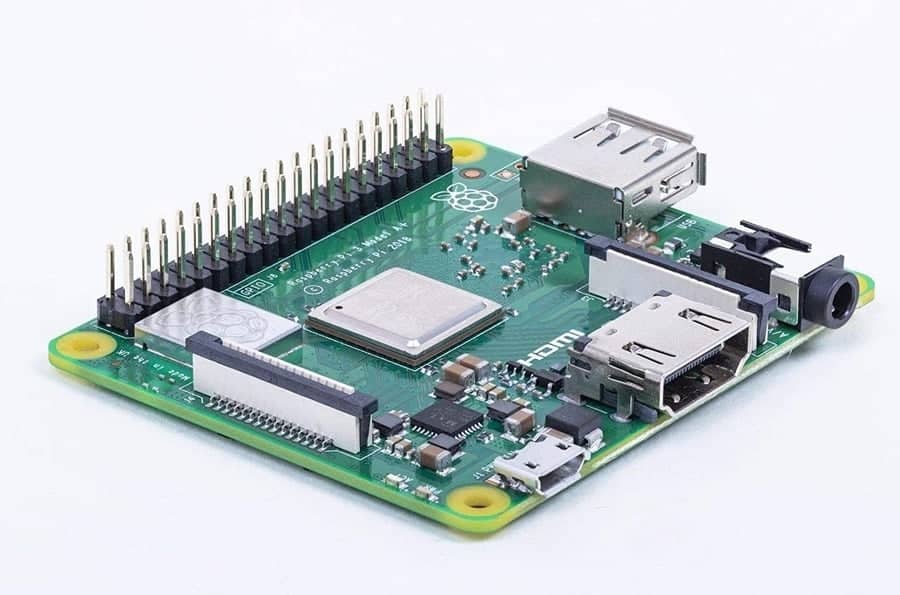 Raspberry Pi 3 Model A+ was first launched on 15th November 2018. It is an updated version of the Raspberry Pi 1 Model A+. The manufacturer was successful in making this ten times faster than the Raspberry Pi Model A+ board. The most lucrative part of this board is it comes with wireless and Bluetooth 4.2 connection.
Raspberry Pi 3 Model A+ was first launched on 15th November 2018. It is an updated version of the Raspberry Pi 1 Model A+. The manufacturer was successful in making this ten times faster than the Raspberry Pi Model A+ board. The most lucrative part of this board is it comes with wireless and Bluetooth 4.2 connection.
So, it’s obvious that you will be more comfortable in getting data on and off. You are going to be very satisfied with this board because you are getting a versatile, more efficient board at a cheap price. The whole operating system is very responsive, and it is wonderful for light web browsing. Its dimension is 3.35 in × 2.2 in × 0.8 in, and it weighs about 29 grams.
Specifications
- SOC type: Broadcom BCM2837B0
- Core type: Cortex-A53 64 bit
- Number of cores: 4
- RAM: 512 MB DDR2
- CPU clock: 1.4 GHz
- USB: 1×USB 2.0
- GPIO: 40 pins
- Analog video out: Shared with audio jack
- Analog audio out: 3.5 mm jack
Pros and Cons of Raspberry Pi 3 Model A+
Pros
- Its size and shape are so adorable.
- It features a quad-core processor.
- Low cost for projects.
- It’s a very user-friendly board.
Cons
- No Ethernet connectivity.
- Few USB ports.
13. Raspberry Pi 3 Model B
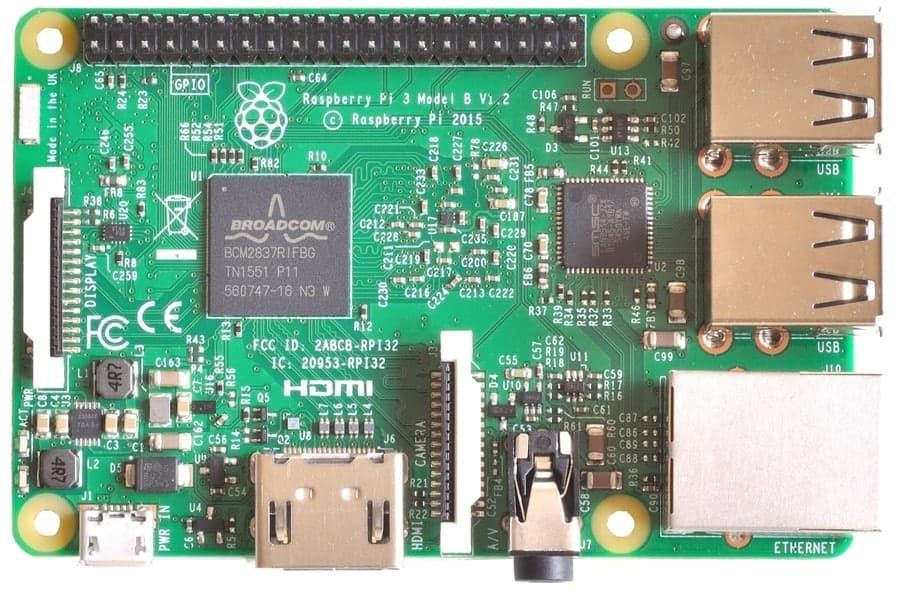 Raspberry Pi 3 Model B was first launched in February 2016. It is one of the most popular raspberry pi boards. It’s like a credit-card-sized board filled with the latest features and offers you the lowest price. This version is improved with wireless and Bluetooth connectivity. Its power source has also been upgraded to 2.5 mA so that it can support more powerful USB devices. So, you can easily connect a mouse, keyboard, or anything else you will need.
Raspberry Pi 3 Model B was first launched in February 2016. It is one of the most popular raspberry pi boards. It’s like a credit-card-sized board filled with the latest features and offers you the lowest price. This version is improved with wireless and Bluetooth connectivity. Its power source has also been upgraded to 2.5 mA so that it can support more powerful USB devices. So, you can easily connect a mouse, keyboard, or anything else you will need.
You can give power source to this board by any USB power supply through micro-USB port. This is a great device for hardware hacking also. This device doesn’t require any external antenna; rather, its radio is connected to a cheap so that it remains on its smallest possible size. Its dimension is 85 mm x 56 mm x 17 mm, and it weighs about 50 grams.
Specifications
- SOC type: Broadcom BCM2837
- Core type: Cortex-A53 64 bit
- Number of cores: 4
- RAM: 1GB
- CPU clock: 1.2 GHz
- USB: 4 USB 2 ports
- GPIO: 40 pins
- Analog video out: Composite video
- Analog audio out: 3.5 mm jack
Pros and Cons of Raspberry Pi 3 Model B
Pros
- Low cost.
- Its board format is consistent.
- Ten times faster processing.
- Wireless Connectivity.
Cons
- The power consumption rate is a bit higher.
14. Raspberry Pi 3 Model B+
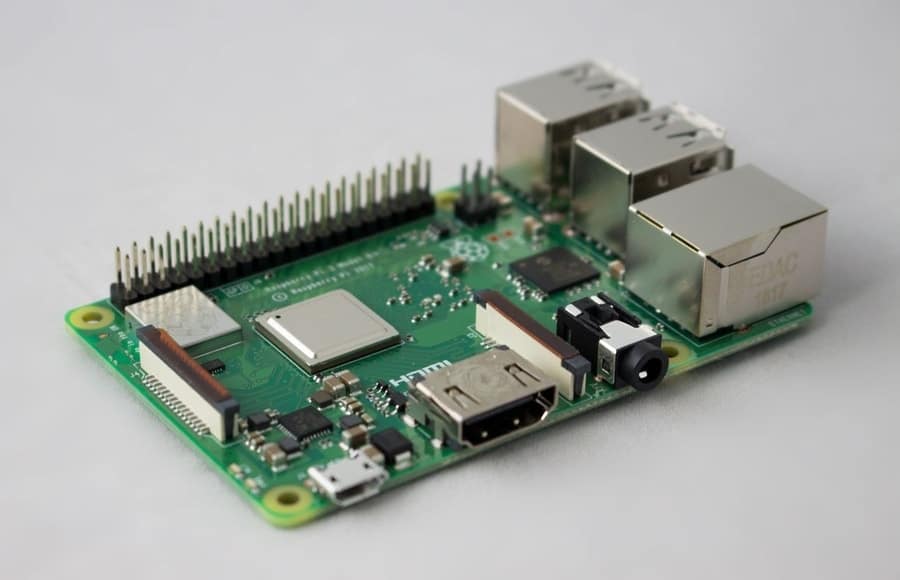 Raspberry Pi 3 Model B+ was first launched on 14th March 2018. It is updated by increasing its processing power and connectivity. You will be surprised by its compact design. It’s such a small device with thousands of applications. It has got wireless and Bluetooth connectivity so that you can connect your phone, tablet, and others. You can supply power to this board by micro USB, and it only consumes 5V.
Raspberry Pi 3 Model B+ was first launched on 14th March 2018. It is updated by increasing its processing power and connectivity. You will be surprised by its compact design. It’s such a small device with thousands of applications. It has got wireless and Bluetooth connectivity so that you can connect your phone, tablet, and others. You can supply power to this board by micro USB, and it only consumes 5V.
This board also features a 40 pin GPIO header that offers you the opportunity to connect all sorts of sensors. It has 1 GB RAM and a micro SD card slot, which you can use for storing your files. It gives a smooth performance for both school projects and big projects. Its dimension is 3.37 in × 2.22 in × 0.67 in, and it weighs about 45 grams.
Specifications
- SOC type: Broadcom BCM2837B0
- Core type: Cortex-A53 64 bit
- Number of cores: 4
- RAM: 512 MB
- CPU clock: 1.4 GHz
- USB: 4×USB 2.0
- GPIO: 40 pins
- Analog video out: Shared with audio jack
- Analog audio out: 3.5 mm jack
Pros and Cons of Raspberry Pi 3 Model B+
Pros
- This is a multi-functional board.
- Low cost.
- Very loving compact design.
- Very easy to set up.
Cons
- Ethernet port cannot reach to its theoretical speed.
- There are some heating issues that may find annoying sometimes.
15. Raspberry Pi 4 Model B (1 GB, 2 GB, 4 GB)
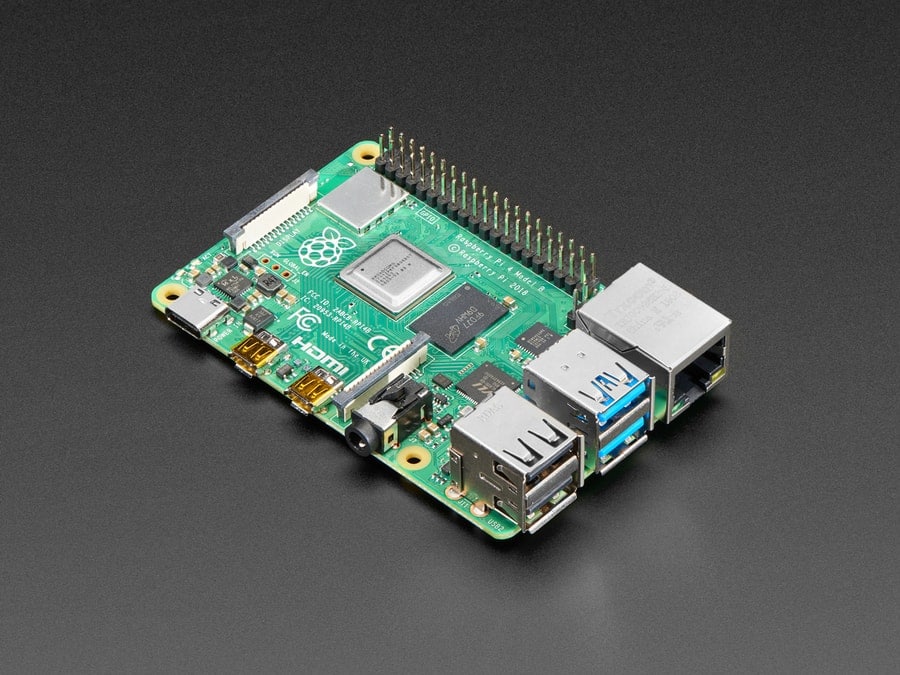 Raspberry Pi 4 Model B (1 GB, 2 GB, 4 GB) was first launched on 24th June 2019. It is the most powerful raspberry Pi board so far. It’s a card-sized single-board computer, which means from USB to memory, all the components are fitted into this tiny board. With the 40 pins General Purpose Input Output, you can provide power to any sensor and also give and receive data from them. Raspberry Pi 4 Model B offers you Gigabyte Ethernet, two USB 3.0 ports, and two USB 2.0 ports.
Raspberry Pi 4 Model B (1 GB, 2 GB, 4 GB) was first launched on 24th June 2019. It is the most powerful raspberry Pi board so far. It’s a card-sized single-board computer, which means from USB to memory, all the components are fitted into this tiny board. With the 40 pins General Purpose Input Output, you can provide power to any sensor and also give and receive data from them. Raspberry Pi 4 Model B offers you Gigabyte Ethernet, two USB 3.0 ports, and two USB 2.0 ports.
All these features provide an excellent performance which will surely satisfy you. But you might make sure that the device remains cool during work. When you reach 80 degrees C of temperature, it will show a warning on the screen. Its dimension is 3.37 in × 2.22 in × 0.4 in, and it weighs about 46 grams. This is an excellent tiny SBC for all purposes, especially for programming enthusiasts.
Specifications
- SOC type: Broadcom BCM2711
- Core type: Cortex-A72 (ARM v8) 64 bit
- Number of cores: 4
- RAM: 1 GB, 2 GB, 4 GB
- CPU clock: 1.5 GHz
- USB: 2×USB 3.0 + 2×USB 2.0
- GPIO: Yes
- Analog video out: Shared with audio jack
- Analog audio out: 3.5 mm jack
Pros and Cons of Raspberry Pi 4 Model B (1 GB, 2 GB, 4 GB)
Pros
- It is one of the most powerful raspberry pi boards so far.
- It features a Gigabyte Ethernet jack.
- Supports USB 3.0
- It features a 4k external display.
Cons
- After working for a few time, it gets very hot.
16. Raspberry Pi 4 Model B (8 GB)
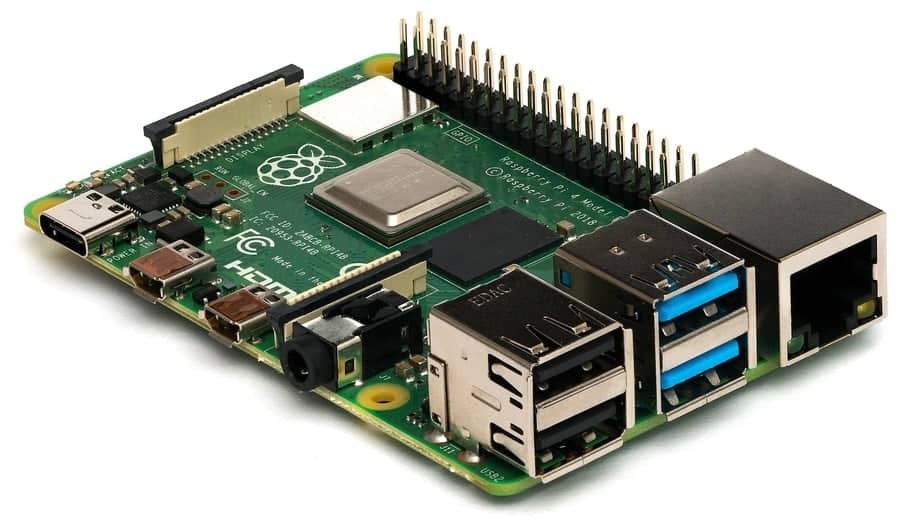 Raspberry Pi 4 Model B (8 GB) is the latest version of the raspberry pi board. It was first launched on 28th May 2020. It’s a fantastic model of SBC which people of all ages found useful for any project, and it can be used for every application possible with an SBC. This board has the ability to offer you 4K streaming videos. It also supports dual monitor, which is really an attractive feature.
Raspberry Pi 4 Model B (8 GB) is the latest version of the raspberry pi board. It was first launched on 28th May 2020. It’s a fantastic model of SBC which people of all ages found useful for any project, and it can be used for every application possible with an SBC. This board has the ability to offer you 4K streaming videos. It also supports dual monitor, which is really an attractive feature.
Raspberry Pi 4 Model B offers you 8GB RAM, which is highest so far, and you can use it for database storing, desktop computing, and so on. The manufacturer has updated this model with the fastest processor. The Ethernet support gigabyte connection and micro SD card slot work twice faster than the previous model. Its dimension is 3.37 in × 2.22 in × 0.43 in, and it weighs about 46 grams.
Specifications
- SOC type: Broadcom BCM2711
- Core type: Cortex-A72 (ARM v8) 64 bit
- Number of cores: 4
- RAM: 8 GB LPDDR4
- CPU clock: 1.5 GHz
- USB: 2×USB 3.0 + 2×USB 2.0
- GPIO: Yes
- Analog video out: Shared with audio jack
- Analog audio out: 3.5 mm jack
Pros and Cons of Raspberry Pi 4 Model B (8 GB)
Pros
- Fastest raspberry pi board.
- There are two ports of USB 3.0 and two ports of USB 2.0.
- It offers 4K video output at 60 Hz only.
- This board supports dual monitor support at a time.
Cons
- Though its the most popular raspberry pi boards, it has some heating issues that should get improved.
Raspberry Pi Compute Module
At first, the compute module reminds us of Raspberry Pi Zero. But practically it is nothing like it. Hence the Raspberry Pi OS is almost the same for both of them. The manufacturer has developed this device to use in a custom device with more flexible features. It features more GPIO and Interfaces than a raspberry board, which gives you the opportunity to design the device according to your need. It has added Flash memory that you can use for storing more data. The compute module is a shrink version to fit on a SODIMM.
Now its connectors can be formatted according to user needs. So, in a sentence, Raspberry Pi Foundation has brought this model in the market to fit in those devices that demand a Raspberry Pi board, but due to its bigger size, it cannot be fit. Compute module is one flexible and small device that one can customize according to their need and use it to any device.
17. Compute Module 1
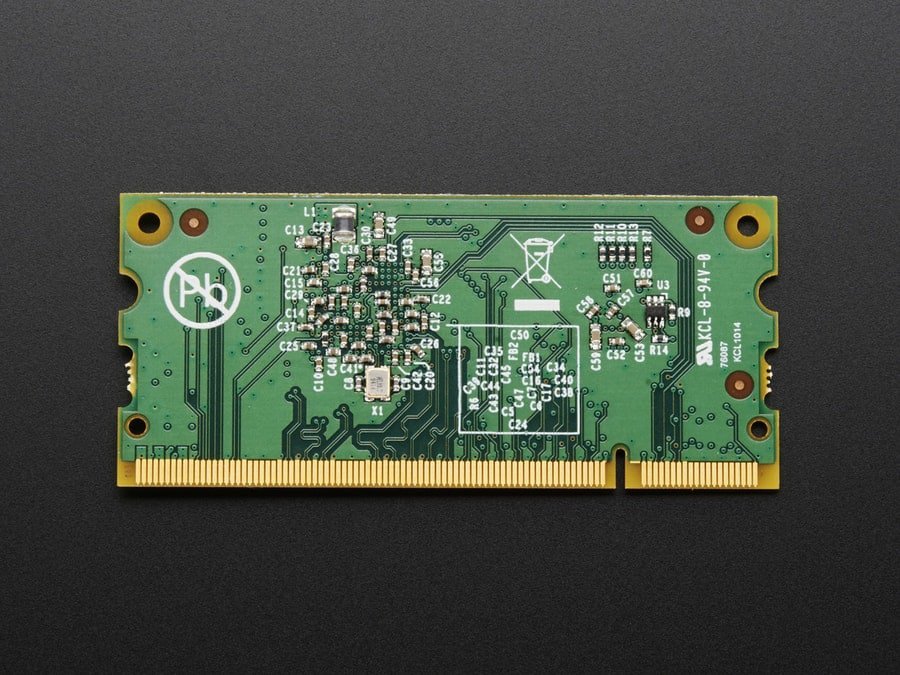 Compute Module 1 is a good option for industrial use. It contains the BCM2835 processor and 512 MB RAM. So, its processing speed is quite good, and you can also store your important documents in it. This board also features 4 GB flash memory that offers you a huge memory space that you won’t find in a raspberry pi board. It’s amazing that such a tiny board can offer you this much versatility. Its dimension is 67.6 x 30 mm. Its production will be continued until January 2026.
Compute Module 1 is a good option for industrial use. It contains the BCM2835 processor and 512 MB RAM. So, its processing speed is quite good, and you can also store your important documents in it. This board also features 4 GB flash memory that offers you a huge memory space that you won’t find in a raspberry pi board. It’s amazing that such a tiny board can offer you this much versatility. Its dimension is 67.6 x 30 mm. Its production will be continued until January 2026.
Specifications
- SOC type: Broadcom BCM2835
- Core type: Cortex-A53 64 bit
- RAM: 512 MB
- Flash memory: 4 GB
- Operating temperature: -25 to +80°C
Pros and Cons of Compute Module 1
Pros
- It’s availability is really satisfying.
- Small-sized board.
- It comes with onboard eMMC.
- Lots of IOs are available on this tiny board.
Cons
- The power supply is a bit complex.
- It features no WIFI or Bluetooth connectivity.
18. Compute Module 3
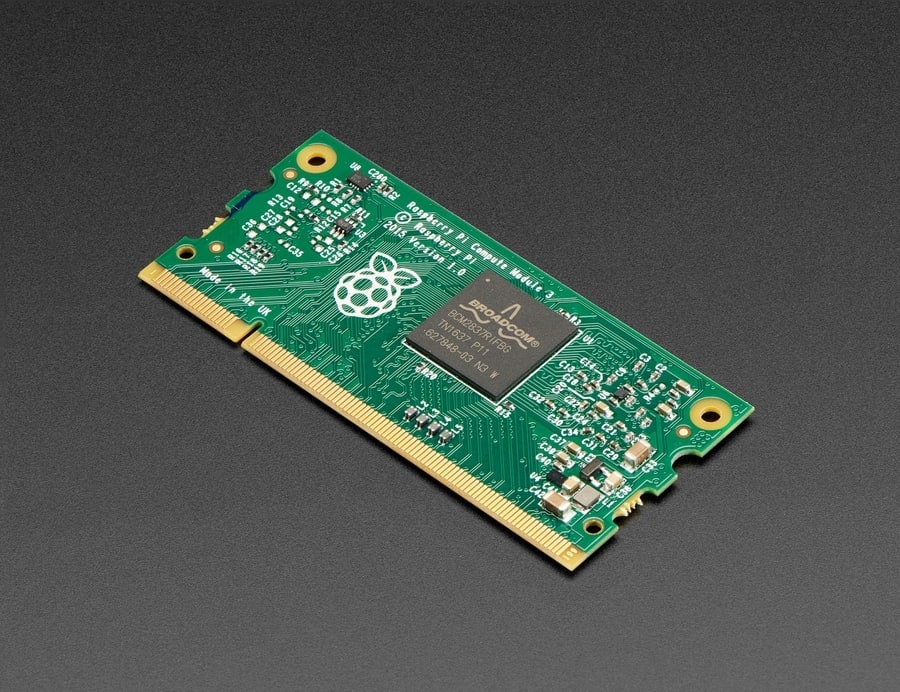 The Raspberry Pi Compute Module 3 was first launched on 25th September 2017. Compute module 3 is mainly a flexible form of raspberry pi 3 that also features 4 GB flash memory. It contains the same processor as the raspberry pi 3 models. So, the processing speed is also the same, and it runs ten times faster than raspberry pi 1. Its dimension is 7.09 x 3.94 x 3.54 inches, and it weighs about 10 grams.
The Raspberry Pi Compute Module 3 was first launched on 25th September 2017. Compute module 3 is mainly a flexible form of raspberry pi 3 that also features 4 GB flash memory. It contains the same processor as the raspberry pi 3 models. So, the processing speed is also the same, and it runs ten times faster than raspberry pi 1. Its dimension is 7.09 x 3.94 x 3.54 inches, and it weighs about 10 grams.
Specifications
- SOC type: Broadcom BCM2837B0
- Core type: Cortex-A53 64 bit
- RAM: 1 GB LPDDR2
- Flash memory: 4 GB
- Operating temperature: -25 to +80°C
Pros and Cons of Compute Module 3
Pros
- Low cost.
- Easy to carry because of its small size.
- Compact design.
- It features a quad-core CPU.
Cons
- Only one USB interface.
- The Ethernet interface is unavailable.
19. Compute Module 3 Lite
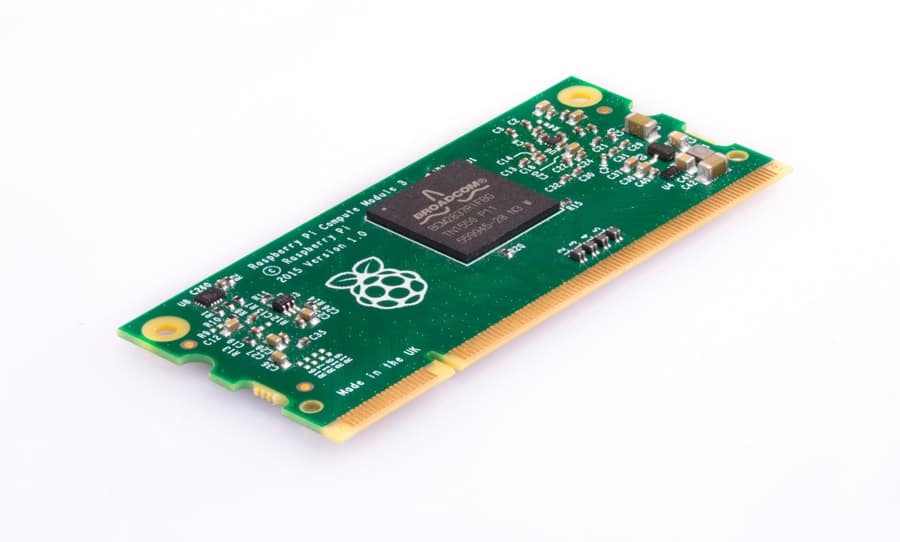 The compute module 3 lite was first launched in 2017. It’s an identical version of Compute Module 3. This version doesn’t contain eMMC flash storage like CM3. The manufacturer has used the same processor as raspberry pi 3. As a result, it has increased its versatility. For all kinds of projects like industrial purpose or school project, you can surely use this model.
The compute module 3 lite was first launched in 2017. It’s an identical version of Compute Module 3. This version doesn’t contain eMMC flash storage like CM3. The manufacturer has used the same processor as raspberry pi 3. As a result, it has increased its versatility. For all kinds of projects like industrial purpose or school project, you can surely use this model.
Compute Module 3 lite features 200 pin DDR2 SODIMM form, but they are not electrically compatible. The great advantage of this model is it gives you full flexibility to control the final design that you won’t find in any other raspberry pi boards. Its dimension is 7.09 x 3.94 x 3.54 inches, and it weighs about 50 grams.
Specifications
- SOC type: Broadcom BCM2837
- Core type: Cortex-A53 64 bit
- RAM: 1 GB LPDDR2
- Flash memory: 4 GB
- Operating temperature: -25 to +80°C
Pros and Cons of Compute Module 3 Lite
Pros
- It features a quad-core CPU.
- It has more GPIO pins than raspberry pi boards.
- It features a camera and a display interface.
- Compute module 3 lite supports more OS like windows 10.
Cons
- A bit heavier than Compute Module 1.
- It doesn’t contain eMMC flash storage.
20. Compute Module 3+
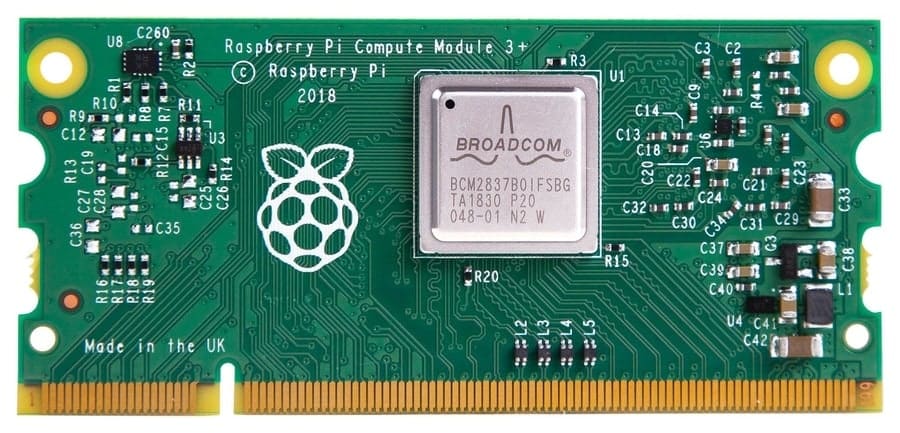 The Compute Module 3+ is basically a flexible version of the Raspberry Pi 3 Model B+. Its versatility is really amusing. This board can be used for school projects as well as for industrial purposes. It has the same processor and RAM as raspberry pi 3 model B+ (BCM 2837 and 1 GB RAM).
The Compute Module 3+ is basically a flexible version of the Raspberry Pi 3 Model B+. Its versatility is really amusing. This board can be used for school projects as well as for industrial purposes. It has the same processor and RAM as raspberry pi 3 model B+ (BCM 2837 and 1 GB RAM).
This version is updated with eMMC flash memory. The lucrative part is you can choose the flash memory according to your need as there are 8 GB, 16 GB, and 32 GB flash device available. This device offers you full flexibility of the processor that means more GPIO and Interfaces are available than other raspberry pi boards. Compute module 3+ weighs only 9 grams.
Specifications
- SOC type: Broadcom BCM2837B0
- Core type: Cortex-A53 64 bit
- RAM: 1 GB LPDDR2
- Flash memory: 8 GB/ 16 GB/ 32 GB
- Operating temperature: -20 to +70°C
Pros and Cons of Compute Module 3+
Pros
- High-class performance.
- Flash memory has increased.
- Light-weight.
- Its updated features increase its versatility.
Cons
- This board is comparatively costly.
- The Operating temperature range should be increased.
Final Verdict
We have tried to give you an overview of almost all Raspberry Pi boards, and the Raspberry Pi Compute Module. All the information that you will need before buying an SBC or doing a project is included here. Raspberry Pi Foundation has updated their devices according to their customer’s needs. We hope that you will find this article very informative and useful. Take a look at all the specifications included before buying an SBC and choose the right one for you. Good luck!
